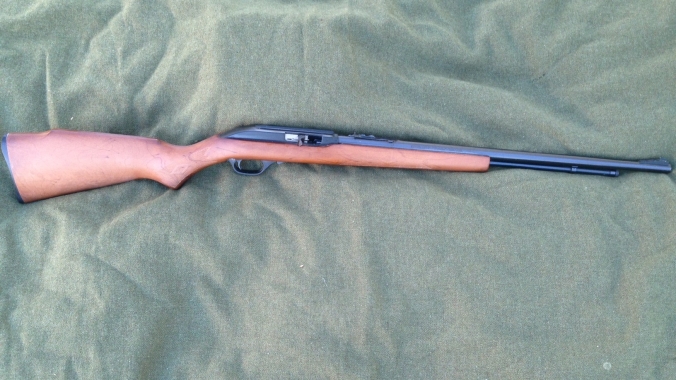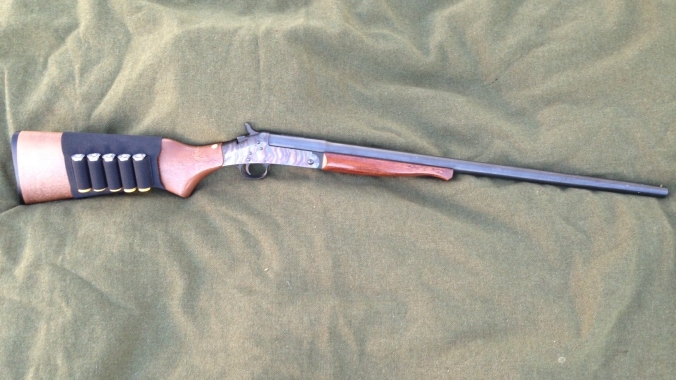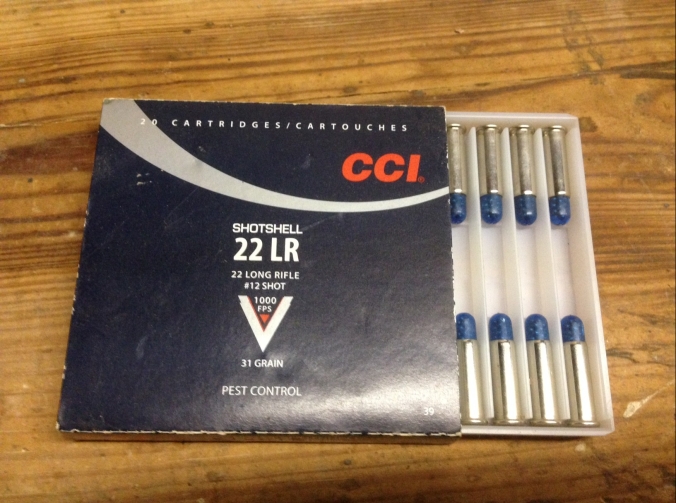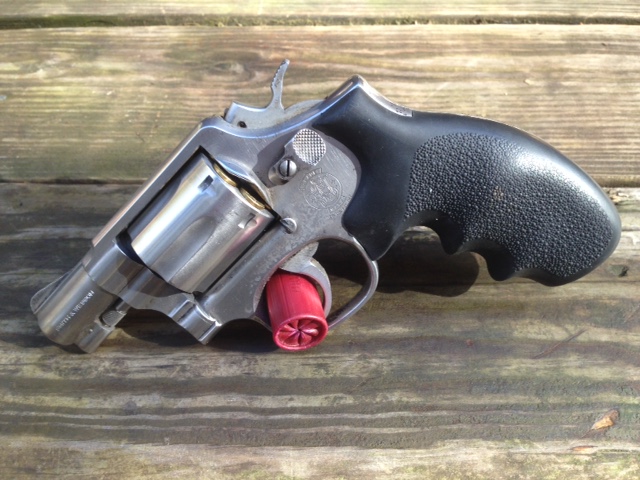Ah, the homestead: Plucky individuals building a small piece of domestic self-reliance, in tune with nature. Of course, once you get started, you find that nature often whistles a different song than you had in mind. Rabbits, deer, and squirrels wreak havoc on your garden; raccoons destroy the sweet corn, and birds harvest the fruit early. Then there is the poultry. Here is just a short list of varmints that have killed my chickens over the years: opossums, raccoons, foxes, skunks, weasels, coyotes, feral dogs, black snakes, owls, and hawks. I fully advocate passive measures like fences for keeping predators out, but sometimes only a bit of lead will stop a varmint with a taste for chicken; and nothing helps take pressure off the garden, while putting meat on the table, like thinning out the deer, rabbit, and squirrel population during the hunting season. A gun is also handy come butcher day. Grandpa may have killed his hog every fall with a pole ax, but a .22 is much easier for the un-practiced.
My first recommendation for the homesteader is a .22 rifle. A good example would be Marlin model 60. I have found this auto- loading rifle to be accurate and reliable. The .22 is affordable to shoot, and well suited for dispatching varmints in the garden or the hen house. I have often used a .22 rifle to stun beeves, hogs, and sheep on butcher day. With proper shot placement, the .22 will incapacitate a fourteen hundred- pound steer instantaneously. While we are talking about putting meat on the table, we can’t forget small game hunting, at which the Marlin model 60 excels. The iron sights that come with the rifle are perfectly adequate; but for hunting, I would install a fixed, four power scope. Fixed power scopes are lighter, cheaper, and more durable than comparable variable power scopes; and four power is plenty of magnification for hunting small game. This rifle can be bought brand new for one- hundred sixty dollars or so, but I often see them used for one hundred.

This 22 autoloader holds 14 rounds and is great for hunting and pest control.
My next recommendation would be a single shot shotgun, chambered in 20 gauge. I recommend the 20 gauge because it has much less recoil than a 12 gauge, and out of a light weight single shot, the 12 has a pronounced kick. The shot gun is much more powerful than the .22, and is highly versatile. When loaded with bird shot, this is another good piece for defending the homestead against varmints or hunting small game, wing shooting doves and pheasants, or even turkey hunting. When loaded with slugs, it is a good deer gun, as long as you don’t need to make any long shots. I keep shells in an inexpensive but cuff on my shotgun; this way, I always have the ammunition at the ready when a coyote comes prowling. Speaking of extra ammunition, why a single shot? Would a double barrel or a pump action be better? Yes, there is a definite advantage to having more than one shot, but the price of these other types of shotguns is usually three times as much as you would pay for a single shot, which can be bought new for one-hundred twenty dollars, and even less for a used one. I don’t really have any brand to recommend when it comes to single shot shotguns. My family has owned a number of them over the years; none made by companies that were memorable. One shotgun I had didn’t even have a manufacturer’s name stamped on it. These were almost generic guns, but the simple mechanism worked reliably in all of them.

The shot gun might be the most versatile weapon available, note the ammunition stored at the ready on the stock.
Those two guns would probably handle most of the needs of a homesteader, but it is hard to keep a long gun within reach all the time. I often like to keep a .22 revolver on my belt when I work around the farm. This way I can keep my hands free to work, and still be ready when the chickens start squawking.

A 22 handgun is much easier to keep at the ready than the rifle. This one is one of the most affordable models I am aware of.
For very close range shots at snakes, bird shot is good. My dad used to carry a .22 revolver loaded with bird shot when fishing. At one- hundred fifty dollars, the Heritage Rough Rider is about the best value in .22 revolvers right now. It’s a single action (meaning you have to cock the hammer to fire), with an old west look to it. While it doesn’t have the fit and finish of a Colt or Ruger, it’s a very serviceable piece for the money.

.22 shotshells are good for small pest like snakes and rats at very close range.
My emphasis in all of these recommendations has been hunting and defense against varmints, and not self-defense against violent humans. Fortunately, crime rates are much lower in rural areas than in the cities. The flip side is that police response times are dramatically slower, and there are fewer bystanders to aid a crime victim. While each of these guns I mention are better than nothing when dealing with two legged predators, none of them are ideal. For home defense, I would add a police trade- in hand gun; either a revolver or an automatic will do. Police departments issue reliable, rugged guns, like the Glock and Smith and Wesson; they also trade them in for new models regularly. Police guns are often battered and worn on the outside from daily carry, but shot very little. Police trade in pistols usually run two- to three- hundred fifty, making them the most expensive guns in this list, but when dealing with a potentially life threatening situation, I would not cut corners on quality. For more on choosing a hand gun, see my previous post.
Another option for home defense would be to upgrade the single shotgun to a pump action. The Remington 870 and the Mossberg 500 are both reliable enough for defensive use. Right now, the Mossberg starts out around three- hundred fifty new, and the Remington will be a little more expensive.
When putting this list together, I endeavored to keep things affordable and practical. There are definitely fancier options for every model on this list, but homesteaders are a thrifty lot, so I have focused on value.
